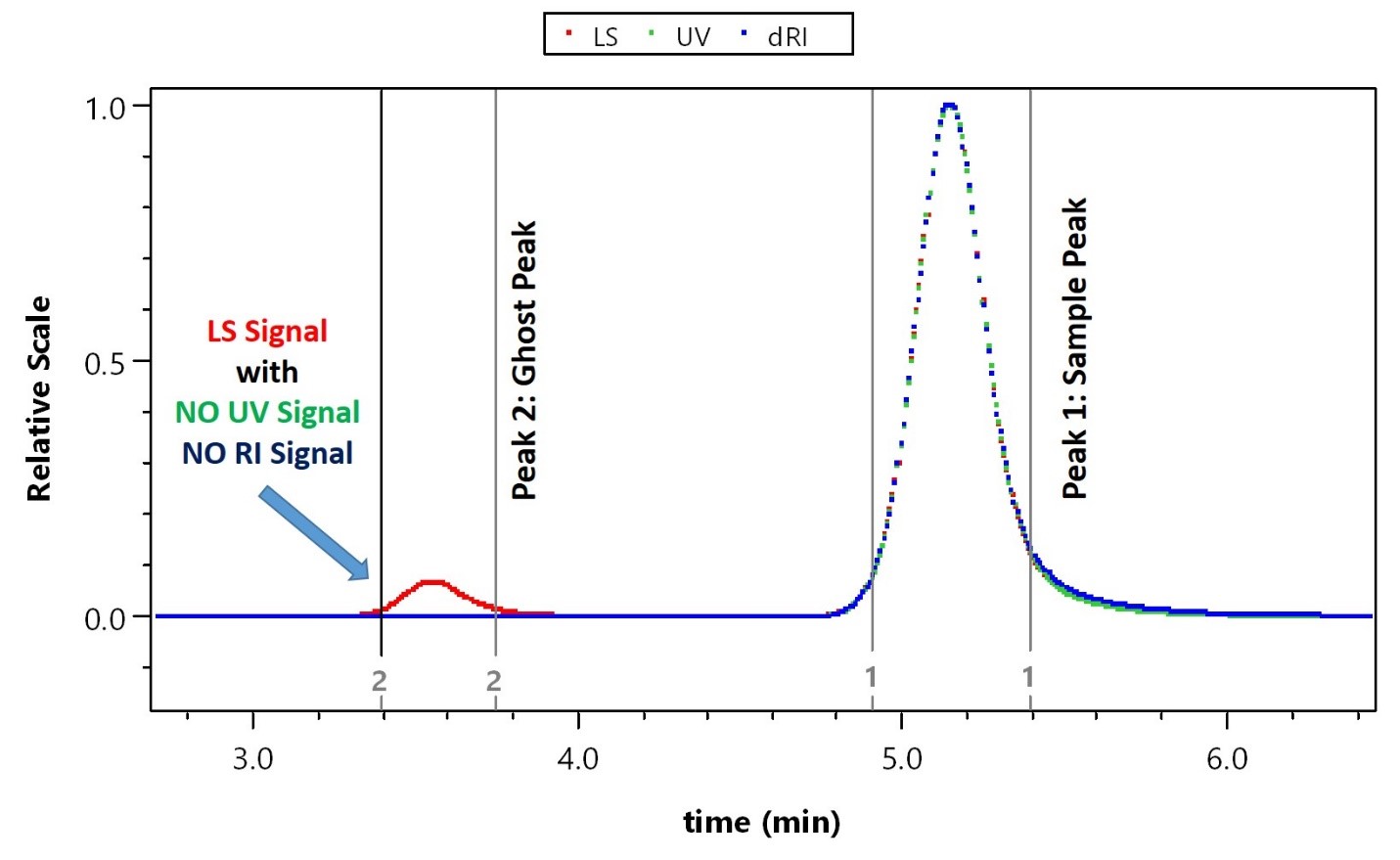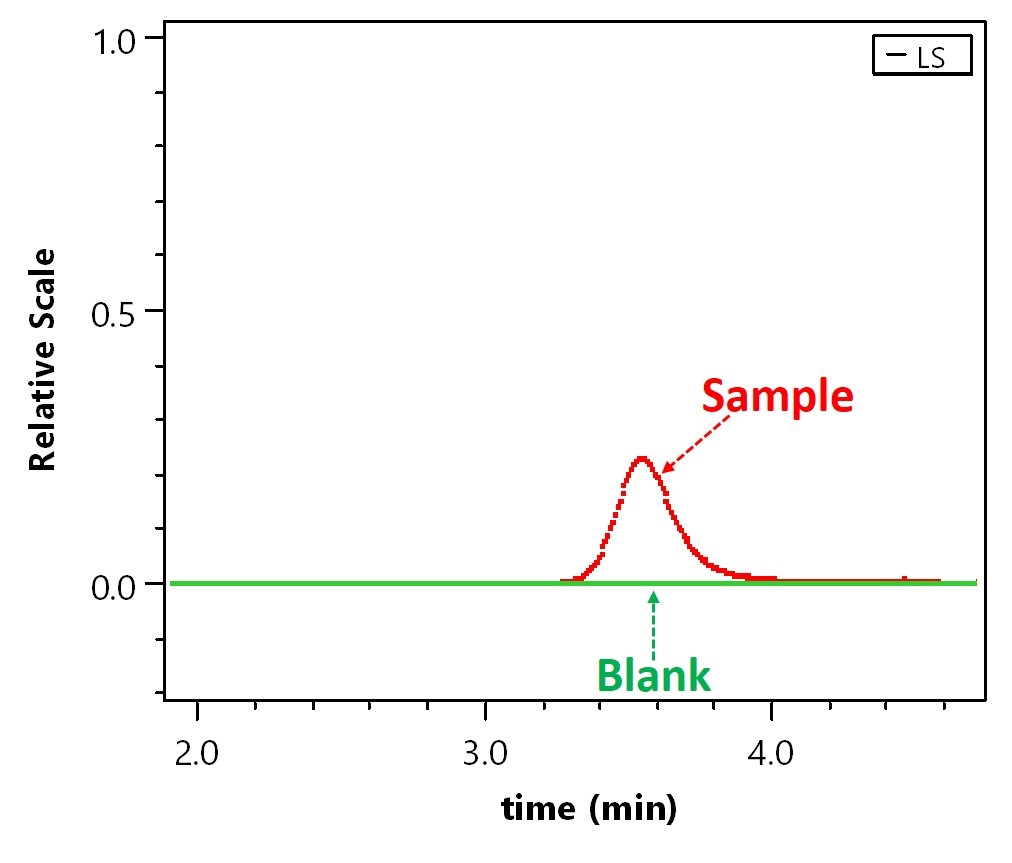What causes a “ghost” peak and what can I do to prevent this?

Introduction
Have you ever observed a light scattering signal without its corresponding concentration peak in the total exclusion volume of your chromatogram? These peaks are due to large particles either present in your sample or bleeding from your HPLC system. For the latter ones, they are called system peaks or “ghost” peaks since they are not real sample peaks.
Because light scattering intensity is highly sensitive to large-sized particles, even very small amounts of those large particles will result in a peak. However, these larger particles won’t be observed by RI or UV detectors because their concentrations are below the detection thresholds as can be seen in Figure 1.
Identifying "ghost" peaks
So, how can you distinguish if those large particles come from your system (the ghost peak) or if they are actually a part of your sample? You can compare the intensity and location of the questioned peak in your sample with a blank (mobile phase) injection chromatogram. If the peak eluted at the total elution time is larger for the sample injection compared to the one for the blank injection, as shown in Figure 2, these particles would likely be part of your sample solution and not a system or ghost peak.
Figure 2: The LS peak intensity comparison for blank (in green) and sample (in red) injections to determine if the large particles are present in the sample or if they come from the system (i.e., a ghost peak). In this example, the intensity of the LS peak is much higher in the sample injection, indicating that the sample solution contains large particles, for example some large aggregates.
What do I do if I have a “ghost” peak?
Otherwise, if the peak at the total elution time can be seen in both the sample and blank injection chromatograms with similar intensities, it is an indication of system or ghost peak. The ghost peak is most likely coming from column shedding during injection, and to a lesser degree, coming from your HPLC system (filters, frits, injectors, tubing, etc.) or mobile phase.
What do I do if I have a “ghost” peak?
If the early peak is due to the sample, then it is not actually a ghost peak, but a real sample peak that needs to be considered in the analysis. Light scattering is a great tool for characterizing these large aggregate peaks as even without a concentration signal available to determine molar mass, the size (RMS radius) and number density can still be determined. If the peak from the large particles in the sample bleeds over into other sample peaks, you can adjust the baselines of the sample peak of interest to exclude the contribution from the larger particles. For details see TN1011 Baseline Determination for Imperfect Chromatography.
If the ghost peak is seen even with a blank injection, then it is due to the system and is a true ghost peak. To eliminate or prevent these ghost peaks:
- Use an HPLC system with minimum pressure change during the load and inject steps. Please note that the pressure during load is only shown on the front panel and typically not part of the data recorded in the HPLC data file.
- If the ghost or system peak is reproducible in multiple blank injections, you can subtract the light scattering baselines of a blank injection from the sample injection using ASTRA’s Baseline Subtraction procedure. For details see TN1012 Using the Baseline Subtraction Procedure in ASTRA™.
- Select a column with minimum shedding. Wyatt offers SEC columns optimized for light scattering measurements which minimize shedding particles, have low baseline noise, and can be ready to run samples in a short amount of time. These columns do not have ghost peak issues when new or well maintained.
- Gradually change the flow rates (by no greater than 0.1 mL/min2) to prevent large pressure changes from shocking the column.
- Add an additional column to further resolve the ghost peak from the sample peak of interest. This will prevent the ghost peak from contributing to the sample molar mass.
Do you have a question? Contact our experts here in Customer Support. We’re happy to help! Call +1 (805) 681-9009 option 4.


